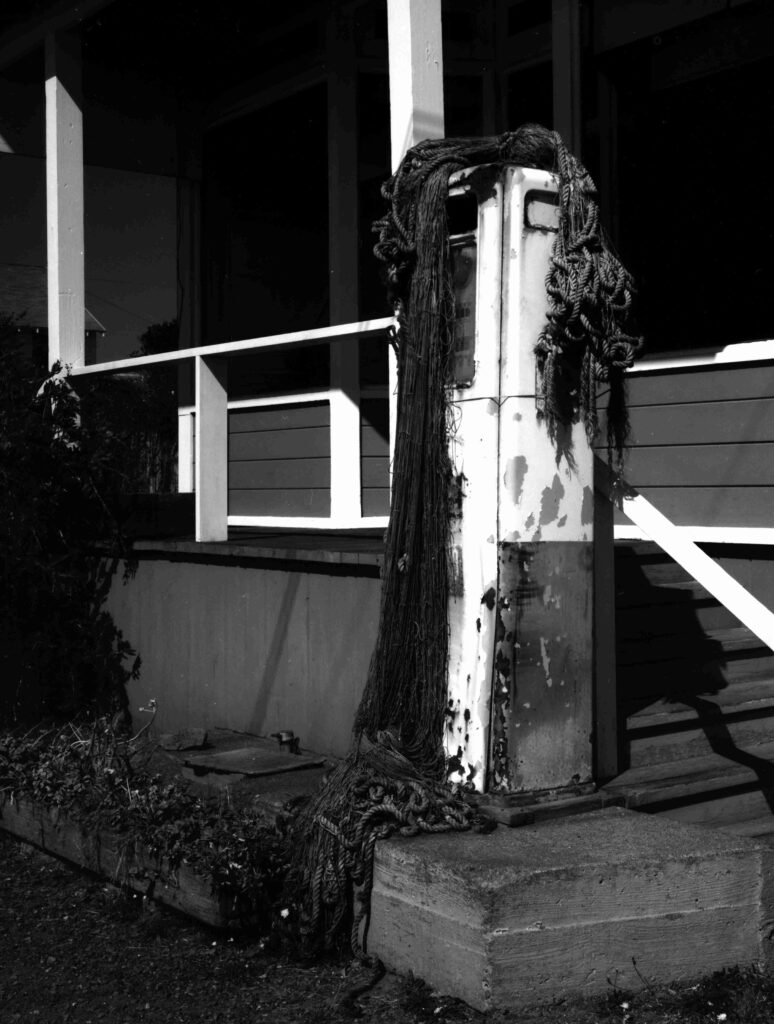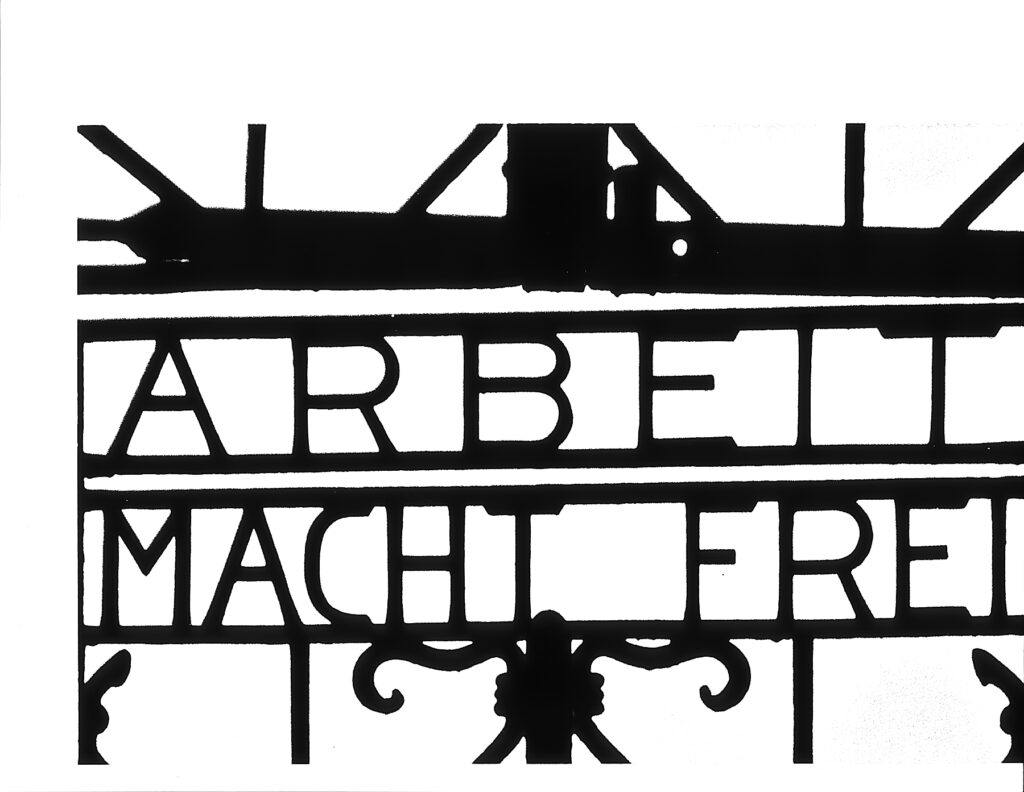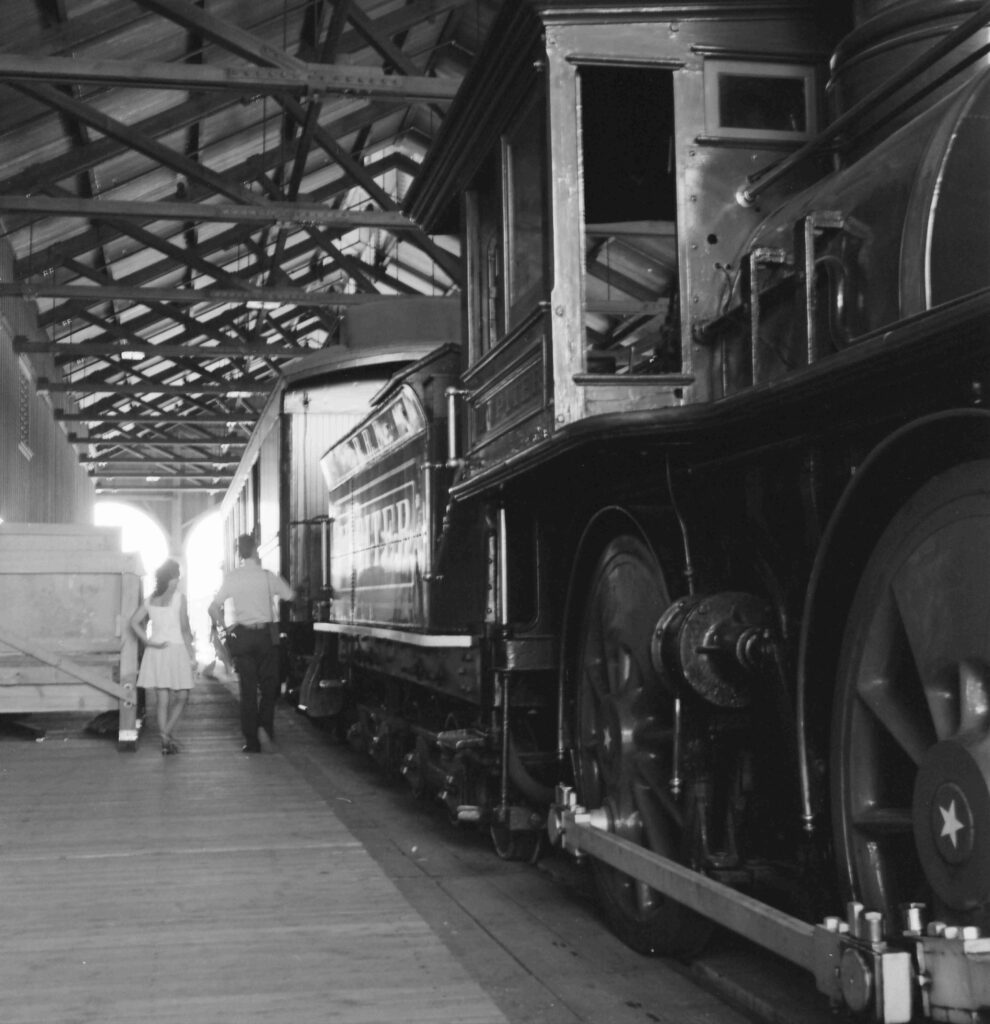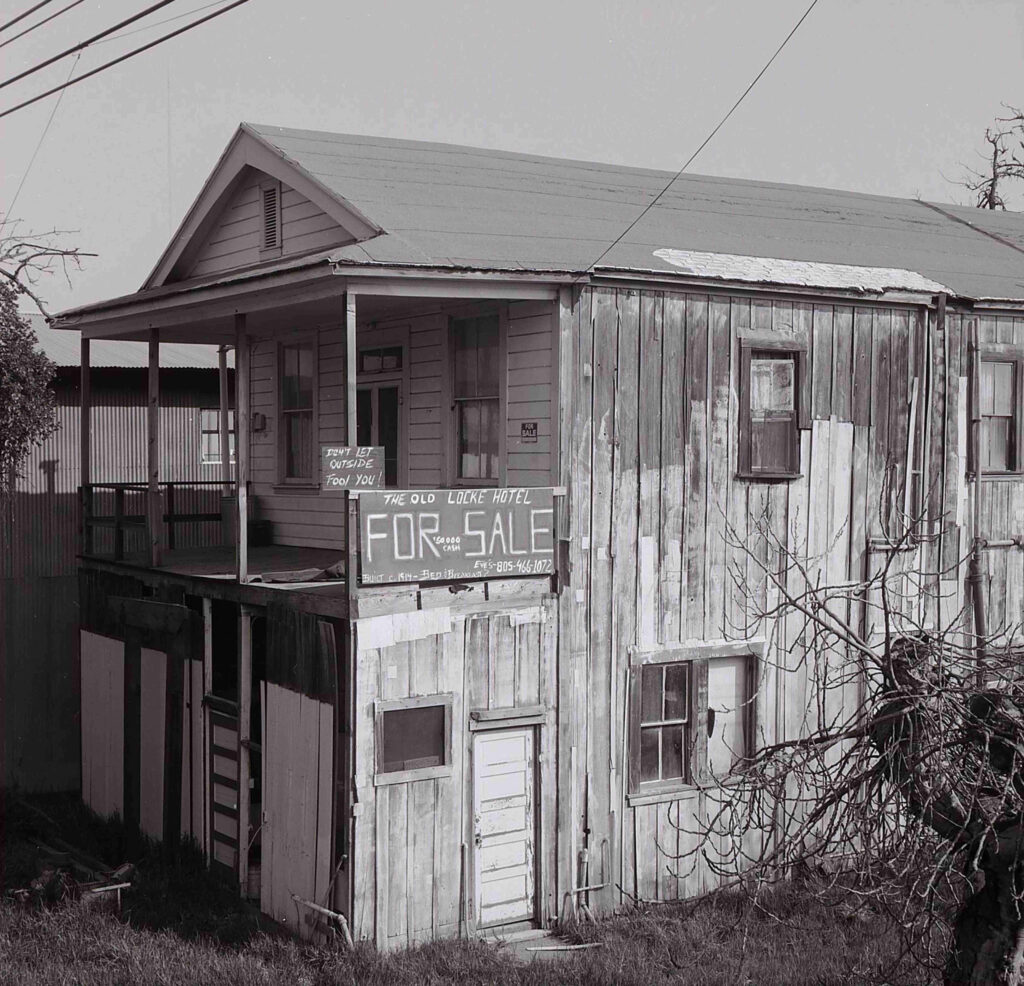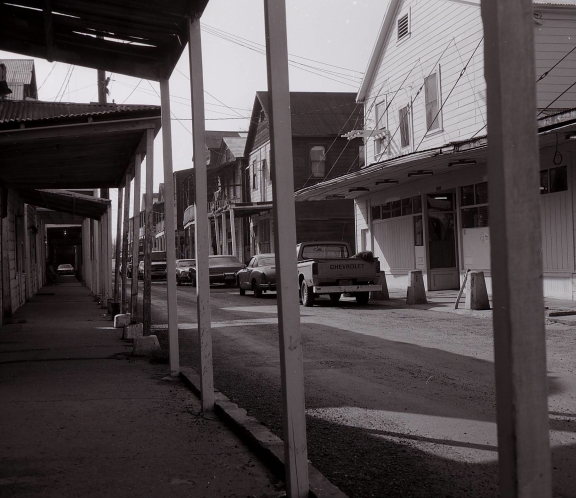Here we are in 2022 and hoping the Covid pandemic is behind us. We are in what they call the endemic stage. During the almost two years of this pandemic, I took the time to reevaluate what I am doing as a photographer. I have found that I have lost contact with my roots in photography. I have been enamored with the siren song of digital photography and got away from the rules and discipline of film photography upon which everything is based.
When I was a youth starting to pick up a camera, back when wagon trains were plodding across the prairies, there was no such thing as digital anything for the masses. Computers were the size of buildings! For us, the height of technology was an IBM Selectric typewriter. Film, both black and white and color, were king. I had to learn arcane procedures like using a light meter, study f stops and shutter speeds and their relation to depth of field and the darkroom protocols to process my own black and white film. Color film was always turned in to a processing center because the developing and printing this film was too complex for the average person. Black and white film was easy to process and print with a rudimentary darkroom. I miss this so I am returning to monochrome film photography. It is a challenge.
Those of us blessed with the gift of sight and normal color vision, see the world in all its vibrant colors. Color photography is easy and made even easier in this digital age provided you have an eye for what makes a good color photograph. Today we can even take great photographs with our cell phones. No need to learn about shutter speeds, f stops, and film speed as the new digital cameras and cell phones are minicomputers and do it all. We just snap the shutter.
However, it was not always this way. For the first 100+ years, photography was black and white. Color film did not really come into existence until the 1930’s but due to World War II, did not really get into the publics hands until the late 1940’s. All color film was given to the Government for the war effort. So, the medium of black and white is not new but a lost art.
This blog may sound a little preachy but that is not my intent. I am going to explain why I am going back to the arcane practice of using monochrome film instead of just desaturating a photo in PhotoShop. So, here we go.
Why do I say black and white photography is an art? Everyone with the gift of sight works in color today because we see in color. There are those who have a varying degrees of color blindness and an even smaller group that nature has drained color from their world. The art is that you see in color but must be able to “drain” your world of color. You must be able to look at a scene, which may be an excellent color picture, and previsualize it in shades of gray. Not every scene we see will look good in black and white. So again, why work in black and white?
Black and white offers so much that cannot be provided by color, depending on the subject matter. It can provide drama to a scene. It can whisk us back to a bygone era. It can provide an ambiance you cannot get with color. It can be stark and harsh or soft and gentle.
There are aids to learn to see monochrome. I will say before embarking on a black and white film project, get yourself a trio of books written by Ansel Adams: The Camera, The Negative and The Print. This trilogy still is my bible. You should also find a processing company who does film and inquire if they also digitize the final product.
Ansel Adams suggests a Wratten #90 filter to aid in learning to see in shades of gray. This filter has the effect of muting color so that the scene becomes almost monochrome. It is an aid that allows you to see how assorted colors translate to shades of gray. Eventually, you will train your mind’s eye and not need the filter.
It goes without saying that along with using film I must use film cameras. Fortunately, I kept my film cameras. That is just the packrat in me. While high-end digital cameras offer a monochrome setting, working with film has both an advantage and a disadvantage. The main advantage is using filters to enhance a scene. Certain filters do different things with monochrome film. The main challenge and disadvantage to film is when you snap the shutter, you either have the picture or you do not have it. There is no washing the photo through PhotoShop to save the picture. That subject is for another blog.
Here are examples of what black and white can do.
Old Gas Pump, Point Reyes
This image of the old gas pump was taken near Point Reyes. It would have been an uninteresting photo if done in color. The badly faded paint on the gas pump made for a mildly interesting picture. On monochrome film, there is interest and a bit of a throwback to a bygone era.
I said that there are photos that should be in color because monochrome does not suit the context.
Rainy Day, Rothenberg ob der Tauber
This is Rothenburg ob der Tauber. This ancient city has survived intact through many wars including World War II. I have been here multiple times and, on this visit, it was raining. Most people put their cameras away to protect them. I saw a certain beauty in the scene with the muted colors, headlights reflecting on the rain-soaked street and the rain coming down. I snapped the shutter and got the photo I had previsualized. All of this happens in a split second.
In black and white this photo is nice but lacks the mood set by the color photo. It does not set a somber mood. The muted colors of the original photo deliver that feeling of a cold, drab day. The black and white image is much brighter and therefore less atmosphere.
I said earlier when shooting in black and white, the photographer needs to previsualize the scene in shades of gray. Digital programs like PhotoShop and Zoner allow you to convert a color photo to gray scale. However, the photographer is still thinking in color when he/she pressed the shutter. With film, the photographer must look at each photo and try to imagine it in gray scale.
Street Performer, Central Park New York
This is a street performer in Central Park. He seems isolated due to the sea of red brick that surrounds him. It is also noontime, so he is casting a minimal shadow. Note the small pop of bright red from his “stuff” inside one of the gray circles.
The black and white photo lacks the same impact. The brick is just gray and the pop of red from the inner small circles is gone.
Black and white can be sinister.
Main Gate, Dachau Concentration Camp, Bavaria, Germany
This ironwork sign is part of the gate at Dachau, Germany. It translates to “Work makes you free.” So, what makes this so sinister? Dachau was the first of the concentration and death camps set up by the Nazis. I went there going back to base from the Oktoberfest and it was one of the strangest experiences of my life. It was a glorious fall day. The sun shone bright and warm. I pulled into the parking lot of Dachau, and all was well. The birds were singing, and it was a warm fall day. Once I walked into the camp, while the sun still shone brightly, it was very cold. You didn’t hear a single bird chirping. It was if the very earth wanted to excise this plot of itself as if it didn’t exist. While I photographed it in black and white, I then copied it onto lithographic film with this result. Color would not have delivered the sinister chill that monochrome does.
Black and white can invoke a feeling of calm and familiarity.
OB’s, Truckee, CA
Truckee is one of California’s older towns that sprang up as a supply depot for the building of the Transcontinental Railroad. OB’s, back in the early 2000’s was situated in one of the original town buildings from the 1860’s. The bar and restaurant are no longer there having been replaced by, I believe, the Bar of America. This shot is both nostalgic and inviting. It harkens back to a simpler time. Makes you want to stop by and have a beer and sit a spell.
All Aboard! State Railway Museum, Sacramento, CA
Very few people alive today actually remember the Age of Steam and the art of running to catch a train. Oh, we think we do but if we miss a subway train or commuter train, another one will be along shortly. We, for the most part, do not use trains for long distance travel. During the Age of Steam from the 1920’s to the early 1950’s, steam trains were the primary form of long-distance transportation. Air travel was in its infancy and far too expensive for the common man. We see it in movies and can sometimes experience how it was by visiting a rail museum. But it is all artificial. To convey this bygone era when I was at the California State Railroad Museum, I shot it in black and white. Here we have two final passengers trying to catch their train. Only the modern clothes give us the sense of modern day. The big giveaway is the man. In that bygone era of steam, the man would be in suit or work clothes and wearing a hat. It isn’t until the 1960’s that hats went out of style for men. Black and white transports us back to that Age of Steam.
The final two photos are of the town of Locke, CA. At the time I visited, Locke was a sleepy town just north of Walnut Grove along the Sacramento River. Built in 1915 by Chinese immigrants, it had its heyday in the 1920’s and Prohibition with many “Speakeasies” or illegal bars. In 1990, Locke was designated as a National Historic Landmark and is preserved for the ages.
Don’t Let the Outside Fool You, The Locke Hotel, Locke, CA
The old Locke Hotel was up for sale. To bring out the textures of the wood and to keep the ambiance of a bygone age, I felt that black and white film, not color, was what was needed here. I love the sign above the For Sale sign that reads “Don’t let the outside fool you.”
Main Street, Locke, CA
The main street through the center of town required that old world look. The old truck and the Volkswagen Carmen Gia did not detract from the ambiance.
Hopefully, I have shown a little of the Art of Black and White photography and the beauty that comes in shades of gray. Not only in black and white challenging but doing it on film helps preserve the art of film processing and printing. We need to keep these skills alive because it also connects us to the roots of photography. I have only scratched the surface with this blog. However, I hope this explains why I am going back to this art form. Give it a try. You may find you enjoy the challenge as well.

